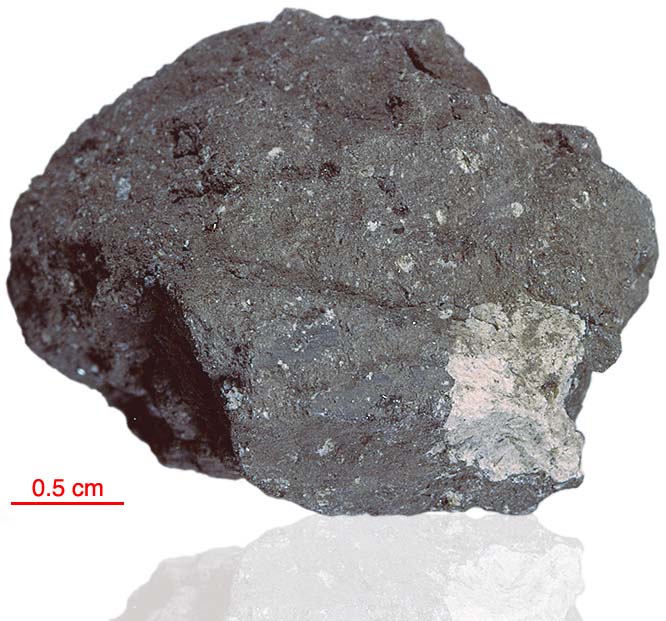
Fact sheet
76565 and its companion 76566 were collected as rake samples. They are fairly coherent regolith breccias, with numerous small clasts of feldspathic material from the highlands and some clasts of mare material from the valley floor. The dark matrix is non-porous and is mostly glass, with a few percent mare and highland clasts. Orange glass is also present, occurring as sizeable irregular fragments and as small beads. Our thin section contains a large white granulitic clast (rotation 1). Another granulitic clast and a plagioclase feldspar clast are shown in rotation 2.
The sample weighed 11.6 grams before analysis and has not been dated.
Further details of this and other Apollo samples are here: http://curator.jsc.nasa.gov/lunar/
Apollo 17, the final manned landing mission, had two objectives: to obtain samples of ancient rocks from the lunar highlands and to look for evidence of younger volcanic activity on the valley floor.
This small Collection contains material deriving from both periods, including igneous rocks around 4.3 billion years old from the lunar highlands as well as younger volcanic samples dating from about 3.6 billion years ago.
Apollo 17 was launched on 7 December 1972.






